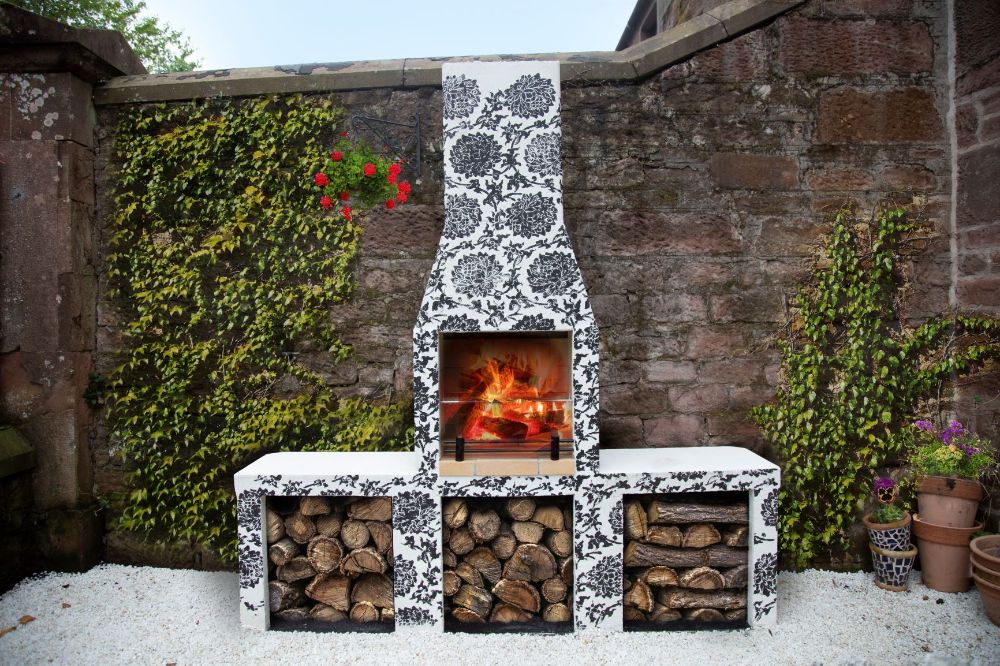Thinking of building an outdoor fireplace? As you cast your mind through the traditional options for outdoor fireplaces – brick, stone, stucco, or concrete – you might want to consider something new. Introducing pumice: a light weight, sturdy, high insulation building material with volcanic origins.
What exactly is pumice and why does it make a good material for building outdoor fireplaces? Read on to find out.
How is pumice formed?
When extremely hot and pressurised magma is released by a volcano, the gases inside the magma expands. This then cools down and solidifies into rock, with tiny bubbles trapped inside it – which explains how pumice is extremely lightweight.
Before pumice can be used as building material, it has to first undergo a purification process. Typically, pumice that volcanoes produce contains a tiny percentage of basalt. Through a washing system, basalt is separated from pumice – the heavier basalt sinks while the lighter pumice floats. Once recovered, pumice is ground up into fine pieces. It’s then processed into blocks or other shapes.
Why choose a pumice fireplace?
Pumice is an all-natural insulator.
Pumice is known to be able to withstand pressures of over a thousand degrees. Other insulation products end up making flue gases cooler, but a pumice fireplace can simply maintain the temperature of flue gases. Pumice moves heat into the area surrounding the fireplace, but it does not allow heat to escape through the fireplace material itself. This means that your fireplace can provide warmth for longer periods of time.
It’s resistant to temperature change.
Because pumice expands or contracts much less compared to other material, there’s also a much lower possibility of it cracking. This is what makes a pumice fireplace much safer to use, and this is also what makes it last longer than other types of fireplaces.
It’s better than traditional heavy materials.
Structurally, pumice offers strength and stability. Even then, pumice building blocks are proof that materials don’t need to be heavy to be strong. Even the Romans relied on pumice to build all sorts of structures.
Another added benefit to the lightweight nature of pumice is that it’s incredibly easy to install. Whether you build your fireplace yourself or hire a local tradie to help you out, the installation job should be completed quickly and with minimal hassle.
It’s easy to personalise.
When pumice is used for chimneys or fireplaces, the fire never damages the chimney or fireplace external render, no matter how hot it becomes or how long it burns. This means that if you paint your fireplace, the design stays intact for a long time.
It’s suitable for use in smaller spaces.
Traditional outdoor fireplaces use heavy material like brick, natural stone, or concrete. These often require a strong structural base, which also explains why they are typically larger in size.
Because pumice is lightweight, it can be used to build slimmer fireplaces that fit perfectly in more constricted spaces. With a pumice fireplace, smaller backyards can benefit from the welcoming and relaxing ambience that only an outdoor fireplace can provide.
Ochre Living Fireplaces: Proof of Pumice’s Unique Benefits
Although they vary in size and design, our fireplaces offer all the benefits that pumice brings to the table. Our fireplaces are built out of pumice from Iceland’s most active volcano, Mt. Hekla. The Hekla volcano produces a massive supply of pumice, as a 2-metre-tall layer of pumice stretches all around the volcano and across Iceland.
Experience the benefits of an Ochre Living pumice fireplace and enjoy the outdoors with more comfort and style.








